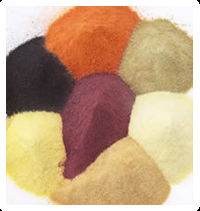Saffron Purchase & Information

Alternative Names
Autumn Crocus, Azafrán, Azafron, Croci Stigma, Crocus Cultivé, Indian Saffron, Kashmira, Kesar, Kumkuma, Saffron Crocus, Safran, Safran Cultivé, Safran Espagnol, Safran des Indes, Safran Véritable, Spanish Saffron, True Saffron, Zafran CAUTION: Please refer to separate listing for Autumn Crocus
Scientific Name
Crocus Sativus
Why Do People Use Saffron?
The oral preparations of Crocus sativus (Saffron), like saffron powder, are used for asthma, cancer, insomnia, cough, atherosclerosis, flatulence, whooping cough (pertussis), Alzheimer's disease, for depression, shock, fright, pain, spitting up blood (hemoptysis), premenstrual syndrome (PMS), dysmenorrhea, premature ejaculation, dyspepsia issues, for dry skin and male infertility. It is also used as an as an expectorant, aphrodisiac and to induce sweating.
Topically - Saffron can be applied on the skin for baldness (alopecia).
In Foods Items - Saffron is mixed in various food items as yellow food coloring, as a culinary spice and as a flavoring agent.
In Manufacturing Practices - In various type of perfumes fragrance and for cloth dyes, extract of saffron is used as essential ingredient.
Is It Safe To Use?
Possibly Safe - Oral and appropriate (short-term) consumption of saffron considered safe to use.
Possibly Unsafe - There are adverse effects reported when high dosage of saffron is used. Oral consumption of 5 grams or more of saffron can lead to serious side effects.
Likely Unsafe In Pregnancy - It can have abortifacient effects during pregnancy.
Avoid In Lactation - Avoid using, no data available.
How Effective Is Saffron?
Saffron may be in following conditions:
• Alzheimer's disease
• Depression
• Dysmenorrhea
• Premenstrual syndrome (PMS)
Saffron may possibly be ineffective in following conditions:
• Male infertility
How Saffron Works?
The most effective parts of Crocus sativus are the flower petals and stigma, nonetheless, the stigma part is utilized substantially in more quantity than the flower petals.
The essential constituents of saffron stigma include picrocrocin, crocins and the volatile oil safranal.
Crocins are carotenoids. Alpha-crocin is the most plenteous constituent. This mixture provides saffron its characteristic yellow-red color.
There is around 4% picrocrocin in stigma, which may be the cause of sour taste of saffron. Safranal makes up around 70% of the volatile oil and provides saffron its smell.
Crocetin is the aglycone of crocin. According to initial research, crocetin enhances plasma oxygen dissemination, which recommends that it could have advantages for atherosclerosis and different conditions.
The flavonoid kaempferol has been separated from saffron bloom petals. This kaempferol constituent has tyrosinase inhibitory action in vitro.
What Are The Side Effects /Adverse Reactions of Saffron?
Extract of saffron has generally no side effects. In previous studies assessing a particular extract of saffron (called Novin Zaferan Co, Iran), reported side effects such as decreased or increased appetite, anxiety, nausea, drowsiness, headache, vomiting, hypomania and sedation.
Another clinical experiment suggests that particular extract of saffron (IMPIRAN, Iran) had side effects such as dizziness (2%), dry mouth (5%), vomiting (1%), nausea (2%), hypomania (1%) and fatigue (1%). The occurrence rate of these side effects were comparative or lower as compare to rates seen in the control group receiving donepezil.
Saffron poisoning can happen with only 5 grams dosage. Side effects include mucous membranes (mimicking icterus), yellow appearance of the skin, vertigo, vomiting, hematuria, bloody diarrhea, bleeding from the nose, lips, numbness, eyelids or uterus, thrombocytopenic purpura associated with serious necrosis of the nose and uremic collapse. Ingesting 10 grams of saffron can cause premature birth, dosage between 12 to 20 grams is purportedly poisonous. Allergy and rhinoconjunctivitis persuaded asthma have been reported. Anaphylactic effects can happen within few minutes of eating food with combination with saffron.
How Saffron Interacts With Other Herbs and Supplements?
Not known.
How Saffron Interacts With Drugs?
Bipolar Disorder - Crocus sativus may have antidepressant reactions and responsible for hypomania in depressed patients. Saffron may induce hypomania or mania in those patients suffering from bipolar disorder.
Cross-Allergenicity - Cross-reactivity reported between Olea (includes olive), Lolium, saffron and Salsola species plants has been reported.
How Saffron Interacts With Foods?
Not known.
How Saffron Interacts With Lab Tests?
Not known.
How Saffron Interacts With Diseases and Conditions?
Not known.
What Should Be the Dose/Administration of Saffron?
ORAL In order to treat depression, a particular extract of ethanol saffron (Novin Zaferan Co, Iran) should be ingested 30 mg per day. Another extract of saffron should be orally consumed in a dosage of 15 mg per day.
For premenstrual syndrome (PMS), particular extract of ethanol saffron (Department of Cultivation and Development of Institute of Medicinal Plants, Tehran, Iran) should be consumed orally in a dosage of 15 mg two time per day.
For Alzheimer, special extract of saffron (IMPIRAN, Iran) should be orally used in a dosage of 30 mg per day.
To relieve dysmenorrhea, particular blend of product containing anise, saffron, celery seed extracts (SCA, Gol Daro Herbal Medicine Laboratory) should be orally used in a dosage of 500 mg three times per day for consecutively 3 days from the onset of menstruation.
Comments
The dried stigmas of saffron are consumed to make saffron spice.
General Certificate of Analysis (COA)
Specification sheet links below are a standard copy of the COA less the batch or lot number and manufactures dates. Specification sheet can be dated and should only be considered as a general information. Please contact and request an up to date COA if needed for specific updated information before placing order by filling out the contact form with product name and SKU number. If ordering quantities of twenty five kilos or more contact for availability.
